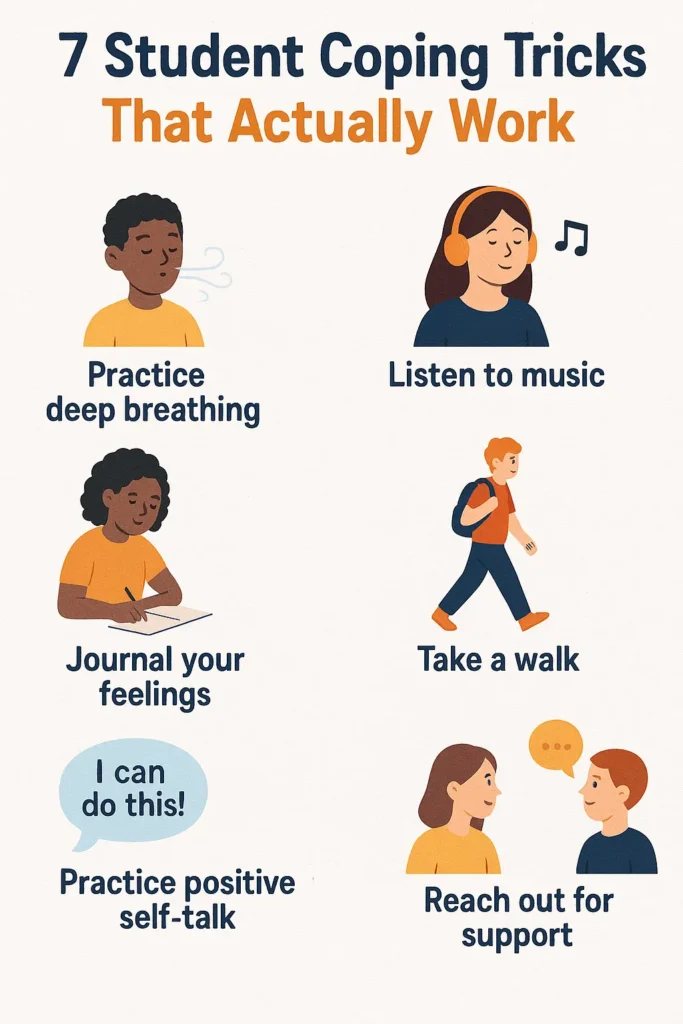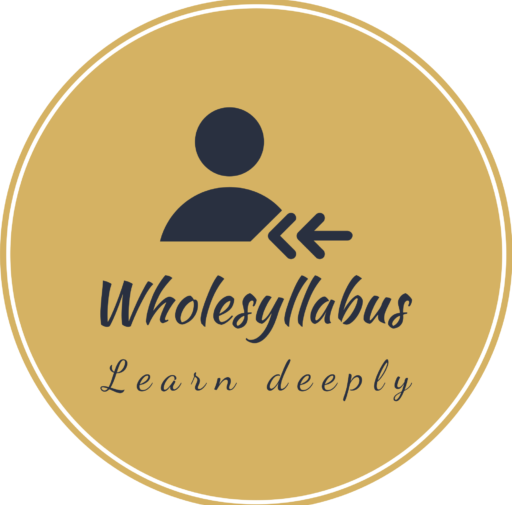Honestly, even I still remember that nervous stomach flip before the first day of school. Kids feel it. Parents feel it. And if we’re being real—it’s way more common than people admit. Back-to-school anxiety can look like sleepless nights, stomach aches, or endless “What if?” questions.
Quick Answer: Back-to-school anxiety is normal, but with the right coping strategies (routines, support, and small calming tools), both parents and students can turn that nervous energy into confidence.
If you’re looking for simple tools, I’ll share calming journals, fidget gadgets, and apps I’d personally recommend later in this guide.
Here’s what most students do to avoid last-minute stress: follow our SAT Exam Day Checklist
What is back-to-school anxiety? (Quick answer)
Back-to-school anxiety is the normal worry or stress kids (and parents) feel around school start—new routines, new people, or higher expectations. It becomes a problem when it affects sleep, appetite, attendance, or daily life.
Why this matters: understanding the cause helps you choose the right fix—routine, talk time, tools, or professional help.
Signs of Back-to-School Anxiety You Shouldn’t Ignore
Quick answer: Look for physical symptoms (stomachaches, headaches), emotional changes (irritability, crying), or avoidance (“I don’t want to go”).
For Parents:
- Sudden clinginess or meltdowns.
- Trouble sleeping.
- Complaints of “not feeling well” right before school.
For Students:
- Loss of appetite.
- Silence about school.
- Overthinking (“What if the teacher hates me?”).
🔗 Reference: Quora parents thread – one mom mentioned her son complained of tummy aches every morning, but once she stayed calm and stuck to routine, symptoms eased.
Table — Normal Nerves vs. Anxiety Signs
| Situation / behavior | Normal nerves (first 1–7 school days) | Possible anxiety signs (needs attention) | What you can try now | When to loop in school / doctor |
|---|---|---|---|---|
| Morning reluctance | Mild clinginess, slower to get ready, needs extra hugs | Daily battles, tears, or shutdowns lasting >2 weeks | Prep bag/clothes at night; calm, predictable routine; “two-choice” options | If refusal escalates or child can’t enter school without distress |
| Physical complaints | Occasional tummy aches or headaches that pass by mid-morning | Frequent aches only on school days; vomiting, dizziness, panic sensations | Validate feelings; breakfast + hydration; brief walk/breathing before drop-off | If symptoms are severe, persistent, or disrupt attendance |
| Sleep | Trouble falling asleep night before Day 1–3 | Ongoing insomnia, nightmares, or 3+ night wakings for >2 weeks | Wind-down routine, earlier bedtime, device curfew 60 mins pre-sleep | If sleep disruption continues or daytime functioning tanks |
| Mood | A bit cranky or quiet after school | Irritability, withdrawal, or sadness most days; loss of interest | After-school decompression (snack + 20 min chill); low-key check-ins | If mood change lasts >2 weeks or you see hopeless talk |
| Schoolwork worries | “Is math going to be hard?” | Perfectionism, meltdowns over small mistakes, avoids tasks | Break work into chunks; praise effort; “good-enough” goals | If avoidance harms grades or there are panic episodes around work |
| Social jitters | Shy at drop-off; unsure where to sit | Avoids peers, lunch, or recess; fear of judgment/bullying | Role-play greetings; set up one buddy meet-up | If bullying suspected or child isolates most days |
| Separation (younger kids) | Extra hug, brief tears at door early in week 1 | Clinging that prevents transition for >2 weeks | Consistent goodbye ritual; teacher hand-off plan | If transitions fail despite routine or child regresses sharply |
| Attendance | On-time with occasional “I don’t wanna go” | Late arrivals, frequent nurse visits, or school refusal | Visual schedule; reward on-time streaks; collaborate with teacher | If absences/late arrivals stack up or avoidance becomes a pattern |
| Body signs (in class) | Fidgety, restless first few days | Panic (fast heart, shaking), frequent bathroom breaks to escape | Teach 5-4-3-2-1 grounding; quiet fidget tool if allowed | If panic persists or teacher reports regular escape behavior |
| Parent stress | You feel a little on edge | Your anxiety spikes, child mirrors it | Model calm self-talk; keep mornings simple; limit reassurance loops | If your stress feels unmanageable, ask school counselor for support |
Quick note: This is guidance, not medical advice. If something feels off in your gut, you’re not overreacting — reach out.
Using a simple academic planner can cut down last-minute stress.
Why Do Kids (and Parents) Feel Back-to-School Anxiety?
Back-to-school anxiety usually comes from change—new teachers, harder classes, unfamiliar faces, or just stepping out of the comfort zone of summer. Parents feel it too because they’re worried about how their kids will adjust.
- For kids: fear of fitting in, making friends, academic pressure.
- For parents: logistics (supplies, schedules), plus emotional worries about kids’ social/academic struggles.
summary: Kids worry about the unknown, while parents stress about preparation and emotional well-being.
🔗 Example: On Reddit’s r/Parenting, one parent shared how their 9-year-old couldn’t sleep for a week before school started. Reading responses, I noticed parents often swap tricks like mock “practice runs” before the first day.
Quick wins: How parents can reduce anxiety today
Start routines early, validate feelings, prepare logistics ahead, and model calm. Small, consistent steps make the biggest difference.
Actionable tips (do these 1–2 weeks before school):
- Start the school sleep schedule early. Move bedtime earlier in 10–15 minute steps.
- Prep the night before. Pack bags, pick clothes, and plan breakfast.
- Do a practice run. Drive the route, find the classroom, or meet the teacher if possible.
- Talk, don’t argue. Ask open questions: “What worries you most?” instead of “Are you nervous?”
- Limit doom scrolling. Reduce screens an hour before bed.
🔗 Example: Parents on Reddit r/BackToSchool often mention how “fake first days” (driving to school, doing the morning routine a week before) really helped calm their kids.
Need a ready-made checklist? Download my free “Back-to-School Parent Prep List” → [link]
If shopping stress adds to your anxiety, check our Best Back-to-School Deals to simplify buying.
Coping Strategies for Students
Quick answer: The trick is teaching kids coping tools they can use on their own when the jitters hit.
Teach kids simple, in-the-moment tools: breathing, short journaling, quick grounding tricks, and safe comfort objects they can carry.
Simple student toolkit (teach these, practice once or twice):
- Breathing: 4-7-8 or box breathing for 60 seconds.
- Grounding: 5-4-3-2-1 (name 5 things you see, 4 you can touch, etc.).
- Micro-breaks: Headphones for a 2-minute calm track between classes. (See headphones guide: Best Noise Cancelling Headphones for Studying).
- Comfort item: A small fidget or bracelet — make sure the teacher is okay with it.
- Post-school decompression: 20 minutes of free play or chat time before homework.
Quora insight: A student on this Quora thread said they carried headphones for “reset breaks” between classes—simple but genius.
Tip from experience: I used to write little sticky notes like, “You’ve got this!” and slip them in lunchboxes. Sounds cheesy, but my niece still says it helped her smile on stressful days.
7 Student Coping Tricks That Actually Work.

Tools & resources that actually help
Use simple, tested tools: guided journals, small sensory toys, mindfulness apps, and good headphones. These reduce arousal and help kids self-soothe.
Recommended tool types & placement for affiliate links (subtle):
- Guided journals — great for middle schoolers to write out worries. (Affiliate link placement idea: inline link where you discuss journaling.)
- Fidget toys / sensory putty — discreet, soothing, teacher-approved models. (Add product callout in checklist.)
- Noise-canceling headphones — for anxious teens who need quiet to focus. Link to our review: Best Noise Cancelling Headphones for Studying.
- Affordable Chromebooks — stable devices reduce tech stress; see our picks: 5 Best Affordable Chromebooks for Back-to-School.
- Planners — lock in routines with a visual plan (see: Best Study Planners for Students).
note: I’d recommend starting with one small tool — like a journal — rather than buying everything. Small wins build momentum.
How to set up a calming morning routine
Keep mornings predictable and low-pressure. Pack the night before, have a protein breakfast, and build in a small ritual that signals “you’ve got this.”
Sample morning flow (10–15 minutes):
- Wake, bathroom, quick stretch (2–3 minutes)
- Calm breathing or a short affirmation (1–2 minutes)
- Easy breakfast (protein + fruit)
- Pack bag, check list, one positive note in lunchbox
- Leave with 5–10 minutes buffer to avoid rushing
Pro tip: Use a visible family calendar so kids see the plan. This reduces “unknown” which fuels anxiety.
When anxiety may need professional help
Quick answer: If anxiety lasts for weeks, causes physical illness, or stops kids from functioning (like refusing to go to school), it’s time to check in with a counselor or pediatrician.
- School resources: Most schools have guidance counselors trained for this exact issue.
- Professional therapy: Cognitive Behavioral Therapy (CBT) is proven effective for kids with school anxiety (source: NIH).
- Support groups: Both parents and students benefit from talking to others dealing with the same thing.
Authoritative resources:
- Child Mind Institute — managing school anxiety.
- American Psychological Association — child anxiety topics.
- For evidence on treatments like CBT.
Action: Start with your school counselor. If you need clinical care, ask for a CBT-trained therapist.
Common mistakes parents make (Quick answer)
Dismissing worries, over-reassuring without action, or changing too many things at once. These well-meaning moves can make kids feel unheard or unstable.
What to avoid:
- Saying “you’ll be fine” and moving on — validate first.
- Fixing everything for the child — give choices instead.
- Waiting too long to contact the school/counselor when avoidance begins.
Better approach: Validate, give one or two concrete coping tools, and follow through with routine.
Wrapping It Up (With a Parent-to-Parent Note)
Back-to-school anxiety isn’t a sign something’s “wrong” with your kid—it’s just their way of adjusting. Most kids settle within a week or two once routines click. The same goes for parents.
Honestly, in my opinion, what most parents miss is that their calm presence matters way more than fancy supplies or schedules. If you’re steady, your kid feels steady.
Want more parent-tested tips? Check out my other guide: Best AP Classes to Take — because once the anxiety fades, planning smart for academics is the next big step.
infographic: A one-page “Parent & Student Anxiety Toolkit” infographic.
FAQ on Back-to-School Anxiety
Q: How long does back-to-school anxiety last?
A: For many kids it eases within 1–2 weeks once routines settle. If anxiety is severe or lasts longer than a month, contact a counselor. (Source: Child Mind Institute)
Q: Is it normal for my child to fake being sick?
A: Yes — somatic complaints like stomachaches are common anxiety signals. Validate feelings and try one short routine or coping tool to see if symptoms improve.
Q: When should I call a professional?
A: If there’s school refusal, panic attacks, or persistent decline in functioning, reach out to the school counselor and a pediatrician or mental-health professional.
Final thoughts (parent-to-parent, honest)
Honestly, in my opinion, what most parents miss is the power of simplicity. You don’t need a perfect plan or a long lecture. One calm adult, one predictable routine, and one tiny coping tool often make the day. If you do those things, your kid will likely feel steadier faster than you expect.
Last CTA (soft & helpful):
If you want a short pack of recommended calming items I trust (journals, a small fidget set, and a noise-canceling wiggle-free headset), check these pages for gear and deals:
- Best Back-to-School Deals
- Best Noise Cancelling Headphones for Studying
- Best Study Planners for Students

Nawab, an educator teaching K-12 since 2010, holds an English honors graduate degree and a diploma in elementary education. He has also been blogging for five years, sharing insights for educators and parents.

